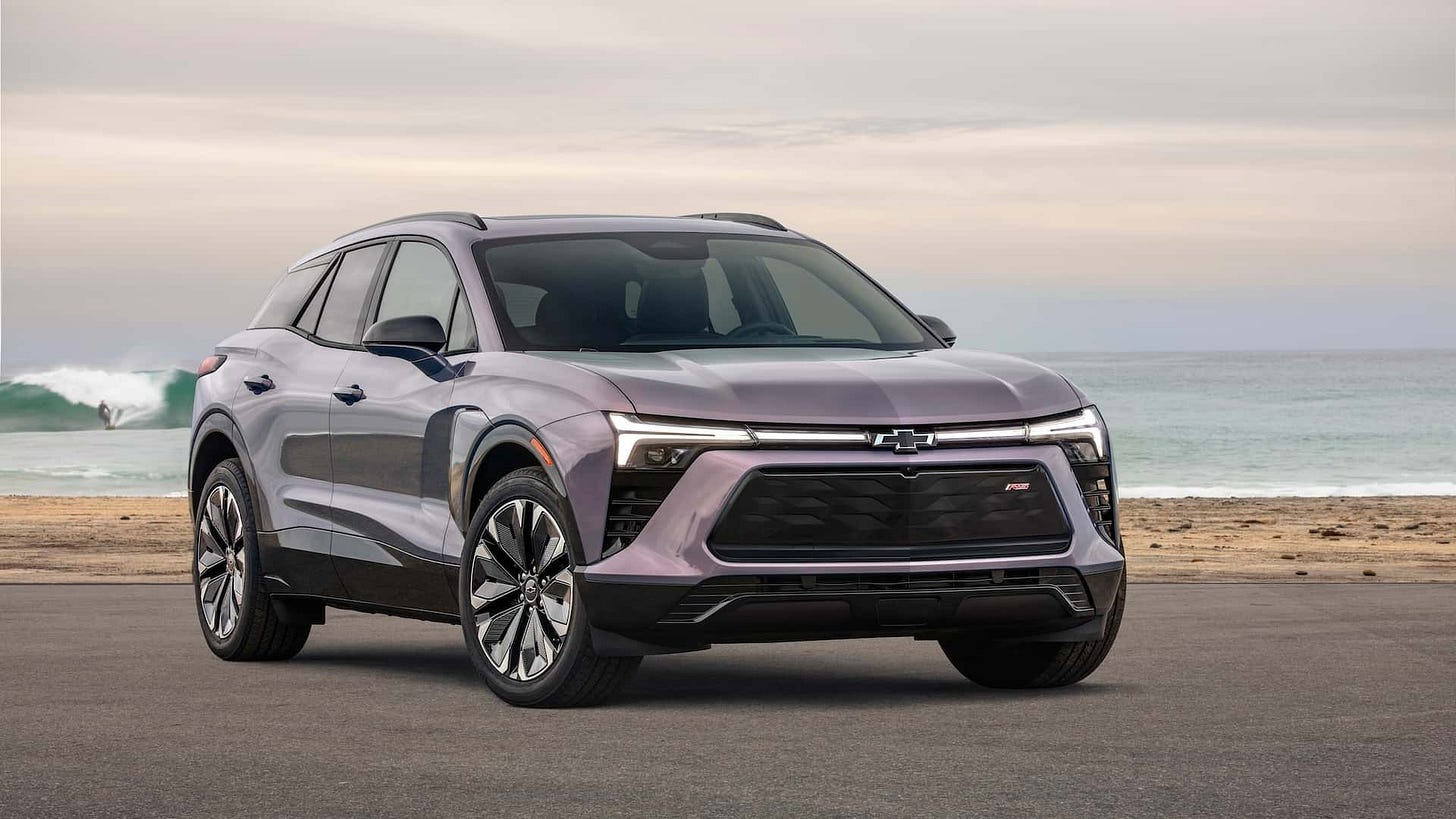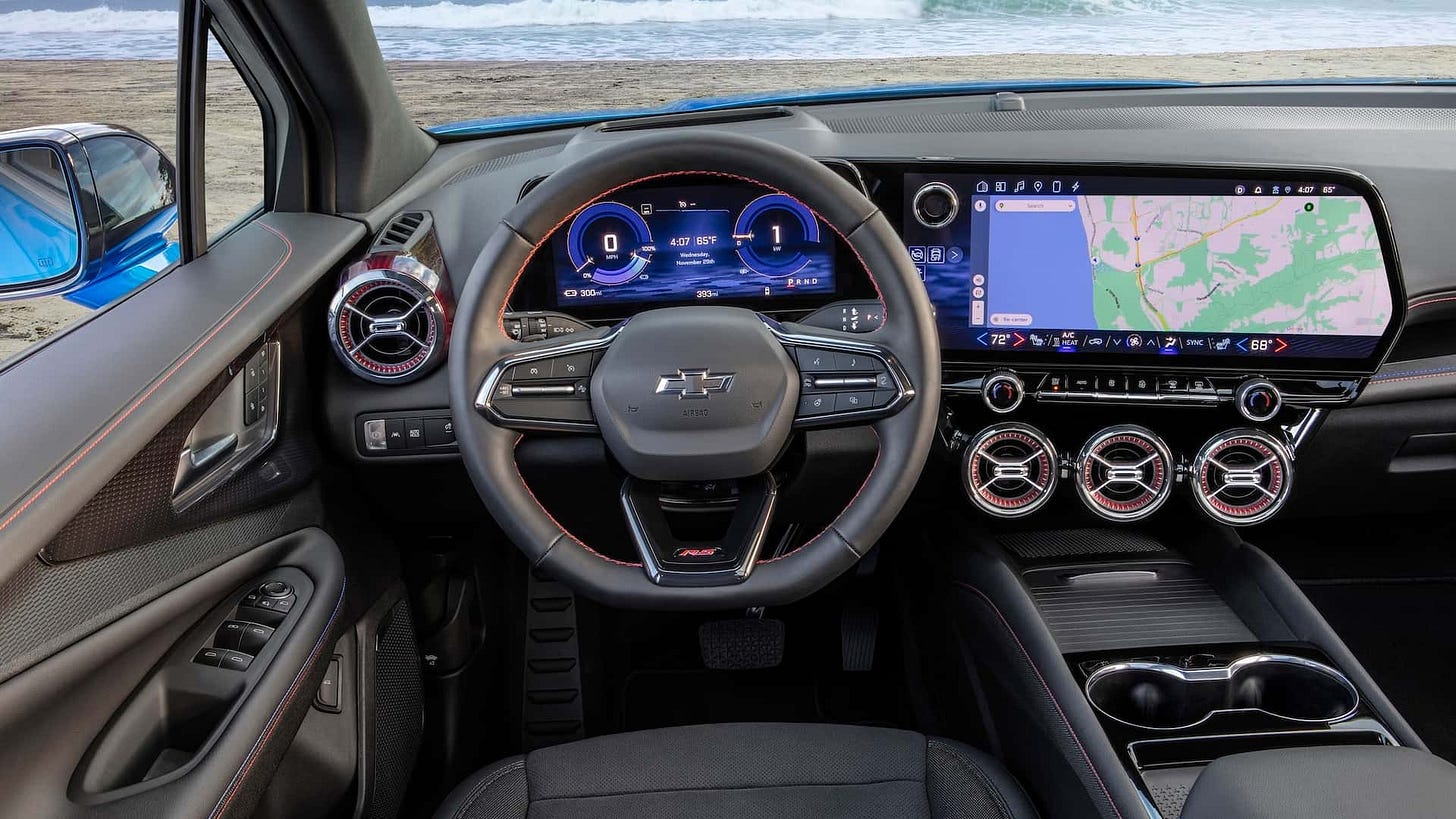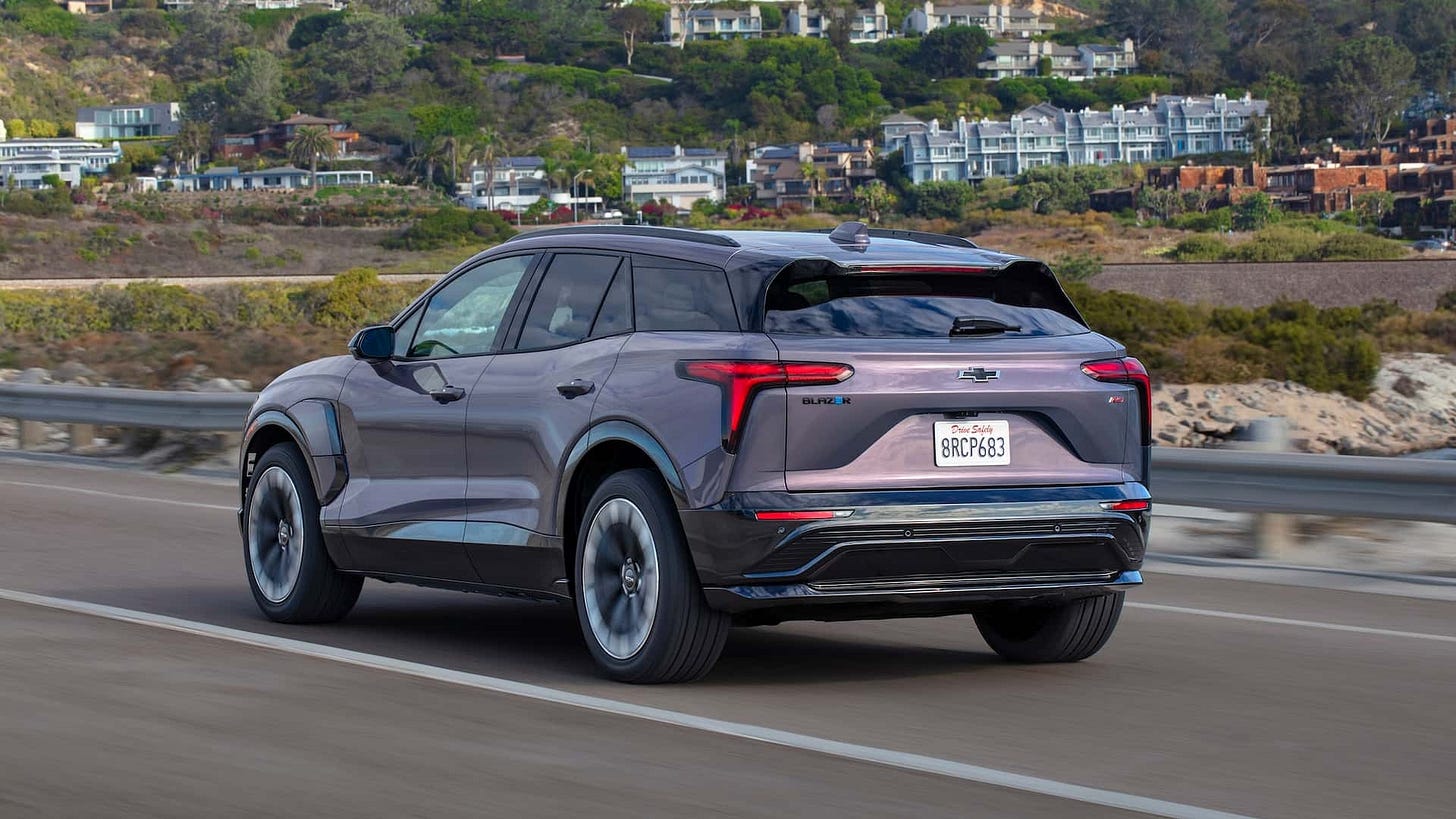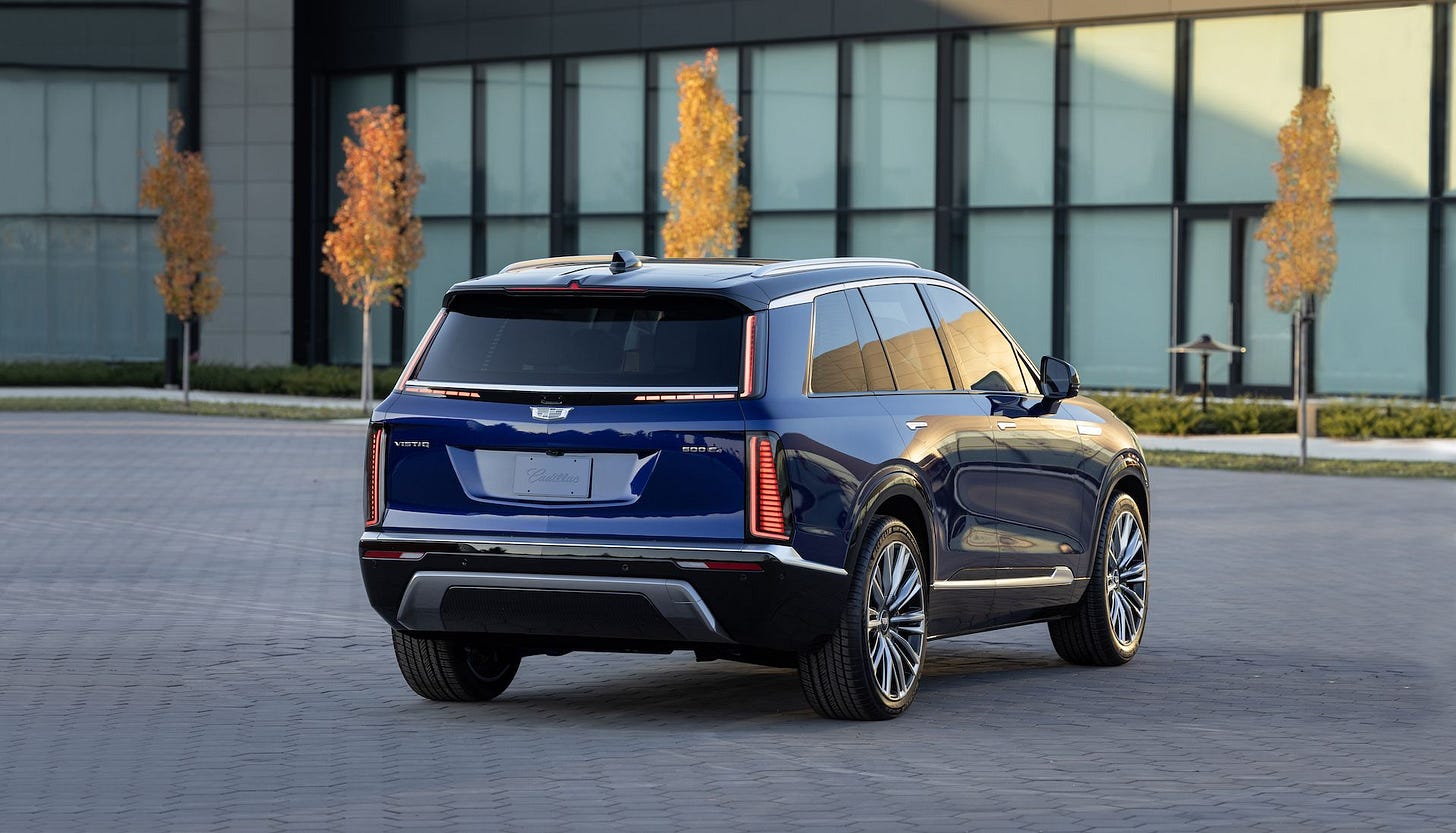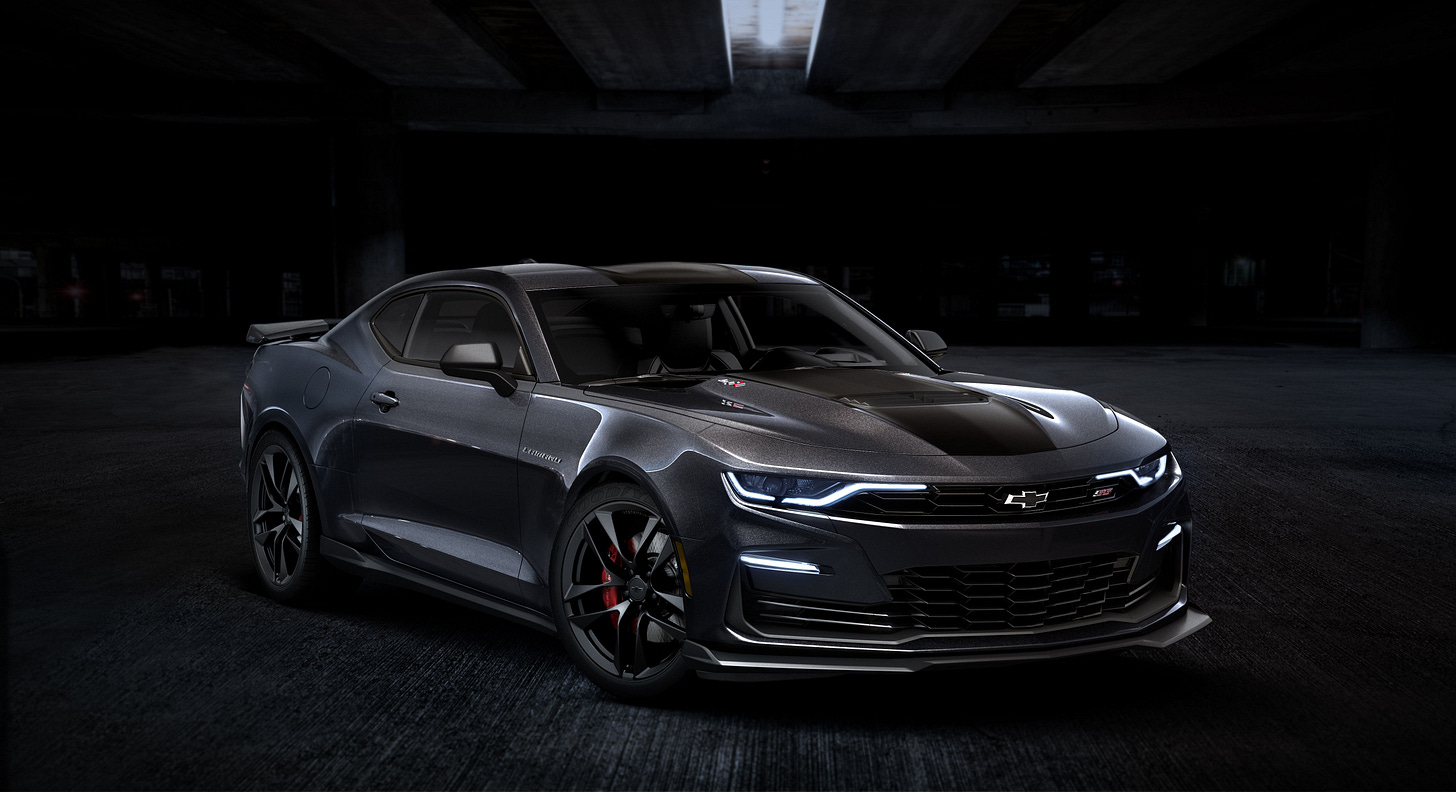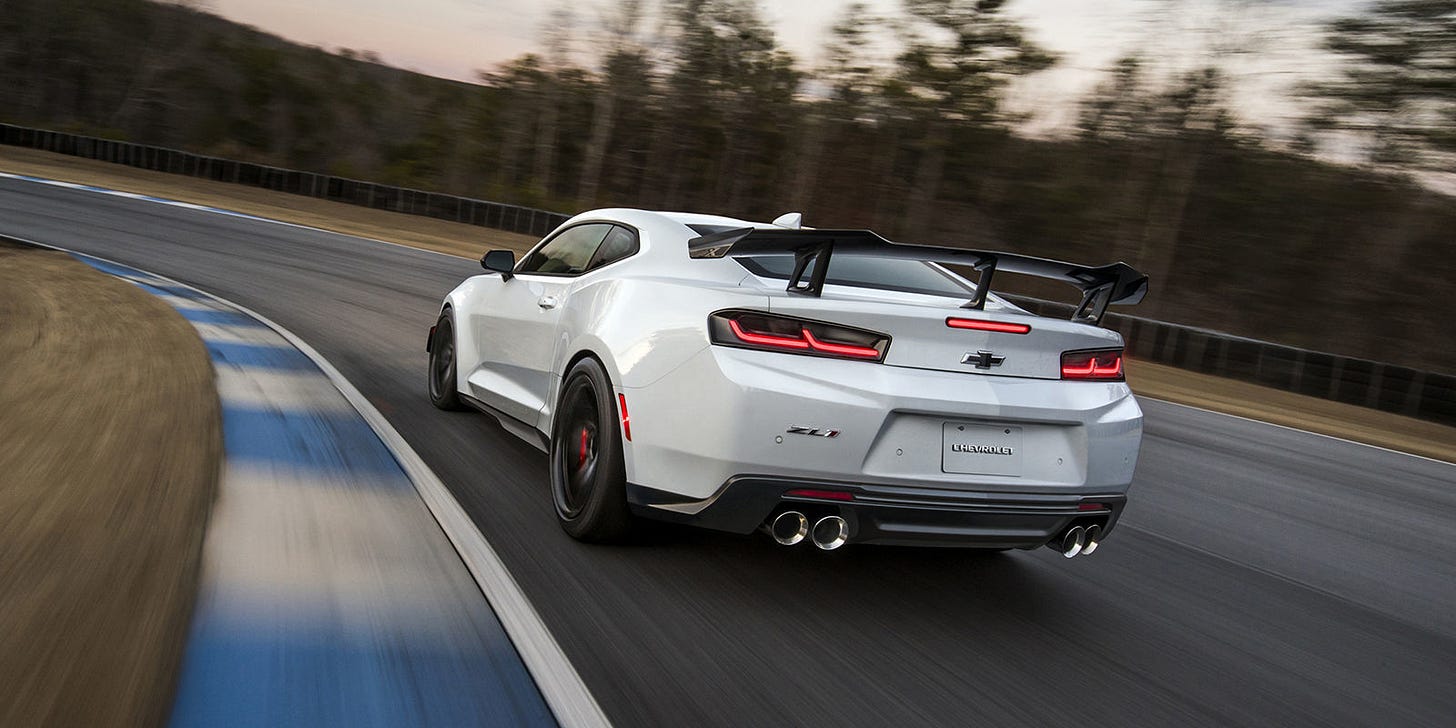Reviews Are Out And The Blazer EV Is A Mixed Bag: Vibe Check
Welcome to the December 15 edition of Vibe Check! This is a weekly roundup of the highlights that went on in the world of cars. It’s not always press releases and rainbows, sometimes it’s about the reaction to a new vehicle, and questioning why, oh why, did this become SUV of the Year?
We’re continuing with the shady optics of MotorTrend awarding the Chevrolet Blazer EV its greatest honor, and reviews of other outlets reveal it’s not all that it’s cracked up to be. We’re sticking with General Motors as there’s more mystery news from Cadillac, as well as some sad news about a beloved sports car.
1st Shift: The Blazer Is Good But It’s Not That Good
After I posted recently that virtually nobody else drove the Chevy Blazer EV, everyone drove the Blazer EV. As I suspect, it’s a good electric vehicle but nowhere near class-leading compared to the size-equivalent Tesla or Hyundai. But now that the skeptics are out in the open, it’s a much easier critique to swallow.
I saw a Blazer EV this week. It’s a handsome thing, and the interior is certainly the star of the show. Where concerns lie is whether that style has the substance to back it up. We now have the answers. There are some strengths but also some misses.
Let’s start with the good stuff. The styling is fantastic, the brakes build confidence in a pinch, and the infotainment system sits among the industry’s finest, typically a strong point for GM.
My buddy at InsideEVs had some positive things to say about it:
(T)he Blazer EV is just a fantastic daily driver. The ride quality is superb—easily trumping the Model Y and Mach-E—the cabin is remarkably quiet and tire noise is minimal.
I have to throw some praise on the 17.7-inch center infotainment screen and 11-inch display in front of the driver, both of which are standard on every Blazer EV. They're superb units with excellent graphics, quick response times and tons of features(…)
He also had some negatives:
Unfortunately, the driving experience itself is where the Blazer EV is a bit lacking.
On a few occasions, my co-pilot and I would try and switch to Sport Mode to see if that would give it some extra grunt, but then we'd find the car was already in Sport Mode. Do not expect the athleticism you get from a Mach-E or a Model Y.
It’s a similar conclusion at Car And Driver or Road & Track. Issues lie in areas where the Blazer tries to be a conventional passenger car and not a torque-rich EV like its rivals. The model that was tested is the mid-level RS trim, which is set to command a minimum of $60,215 for the eAWD variant. A larger battery sits in the RWD Blazer, hence demanding $1,575 more at $61,790. On the offset of that, you get 324 miles of EPA-estimated range versus 279 in the eAWD. So it may be worth it to pay the extra premium if you’re set to spend this much money on a Chevrolet.
The Blazer EV is dimensionally similar to its gas-powered sibling. Unfortunately, it takes off similarly to the gas sibling. EVs are typically winners at the drag strip but not this one. Blame it partly on the relatively low amount of power but mostly on its weight. The lightest Blazer on sale — RWD RS — weighs in at a porky 5,591 pounds. eAWD is likely heavier if consistent with gas-powered cars. Passenger electric vehicles have never lightweight because of those big battery packs but until now, the majority of them have had ridiculous amounts of oomph to combat the scale that made them darlings on the track.
There is an Blazer SS coming with that oomph. 557 horsepower and 648 lb-ft of torque versus 288/333 in the RS eAWD model. RS RWD gets 340/325 on account of the larger battery. There are also cheaper Blazer EVs coming with Chevy aiming for less than $50,000. All Blazers will qualify for the full $7,500 tax credit courtesy of the government so that will drop your price down to the low 50s. Trouble is, the Tesla Model Y, Hyundai Ioniq 5, and Ford’s Mustang Mach-E are cheaper still.
Finally, there’s the Ultium problem. GM’s anticipated rollout of a slew of EVs to deliver as many cars as Tesla is not going well. As decent as the first two models are, the Cadillac Lyriq and GMC Hummer EV, they are having almost no success landing into buyers’ hands. The Hummer is a finally a regular sighting on the street some 3 years after launch.
The Blazer EV is hopefully the model to break that cycle, and speed up the debuts of the less expensive Equinox and Silverado EVs. The Bolt is also getting a redesign now that the public has responded by buying a heck amount of them because they’re cheap to purchase new.
In the meantime, we can paint a better picture of the Chevrolet Blazer EV. While not worthy of accolades, it’s far from a critical miss. But more than ever, it has to make production targets if GM wants it to be a mass hit with buyers. I’m happier than last week.
2nd Shift: Cadillac Is Expanding Its IQ
Another Cadillac EV model has popped up in little detail. Just weeks after releasing teaser images of the compact Optiq, we are getting a first look of what’s slated to become the midsize family offering.
This is the Vistiq, a three-row SUV slated to sit below the Escalade IQ and higher than the existing Lyriq. As with the Chevrolet EVs, all forthcoming Caddy EVs are inclined to be supported by the Ultium platform so there’s a lot of hype around it regardless.
Like the Optiq, there are almost no details of what to expect under the hood or what it looks like inside. With GM continuing to outline its ambitions of an electric future, the least we can do is root for them to pull it off the same with the Blazer EV.
The difference now is that there is a confidence brewing. The Blazer EV arrives a couple of years late, but it carries a stunning visual design that won’t make for a disappointing first impression. Cadillac builds a handsome Lyriq so there is no question in my mind that the Vistiq and Optiq will appeal greatly.
3rd Shift: The Camaro Is Dead, Again
Chevrolet confirmed to Road & Track this week that the sixth-generation Camaro has ended production. There was no fanfare nor mention of what the specs of the last Camaro was that rolled out of the Lansing, MI factory. All we can do is reflect on its legacy.
And what a legacy it was. The last iteration of the iconic pony car was released in 2015 for the 2016 model year. As the muscle car war was hotting up with a new Mustang platform and the Dodge Challenger Hellcat, the Camaro was inclined to stand out as the track-friendly sports car of the group.
The Camaro’s strengths lied in the chassis. Devoted engineers tuned the independent multilink suspension on all four wheels to near-perfection. Then they slapped massive tires on it as part of the 1LE Performance package that came with an upgraded exhaust as well as some other doodads under the skin to make it more suitable for spirited driving. This list of upgrades varied depending on the engine.
You could have a 2.0-liter turbocharged I-4, a 3.6-liter V-6, or what everyone wants, the 6.2-liter V-8. The most extreme Camaro bolted a supercharger to the V-8 and put it in Chevy’s greatest supercar slayer, the ZL1 1LE. Really though, it took only a 1LE package and the biggest engine to woop Mustang and Challenger butts on a race circuit.
In recent years, Dodge released a number of Last Call editions to bid adieu to the Challenger as we know it. Ford has promptly updated the Mustang, including a Dark Horse variant that could finally stand toe-to-toe with Chevy’s aged but brilliant 1LE chassis. The Camaro has seen fewer changes. The 2.0-liter option was dropped and the 2024 model bowed out with a Collectors’ Edition, which is really just a visual package available on the remaining two engines.
Lack of hype aside, it’s clear that there is a lot of love for the Camaro inside the company. R&T also got this statement from Chevrolet:
"Camaro is a passion product. It has developed a fan base across the world and has brought people into Chevrolet dealerships for generations. The sixth generation specifically represented athleticism and composure – exuding confidence on the road and dominance on the track."
This is not the first time the Camaro has bowed out of production. It enjoyed a 36-year run from 1966 to 2002 before being reintroduced as the Bumblebee Transformer body double for 2010. With GM backtracking on the Bolt’s permanent cutoff to be reintroduced on the Ultium platform as a new-gen EV, logic stands to reason that the Camaro could very well see the same fate. As of now, that remains up in the air.
Farewell, Camaro. I’m sure we’ll see you again. This isn’t a goodbye, it’s more of a ‘see you later.’
Weekend Getaway: Stay Toasty
Temperatures are seeing drops across the US as we inch closer to Christmas. Keep your houses and your cars warm. You are worth living in this very moment of precarious history. Where there’s a low in life, there’s always a high. So be sure to crank up the heater and never leave to go anywhere without your socks on.



